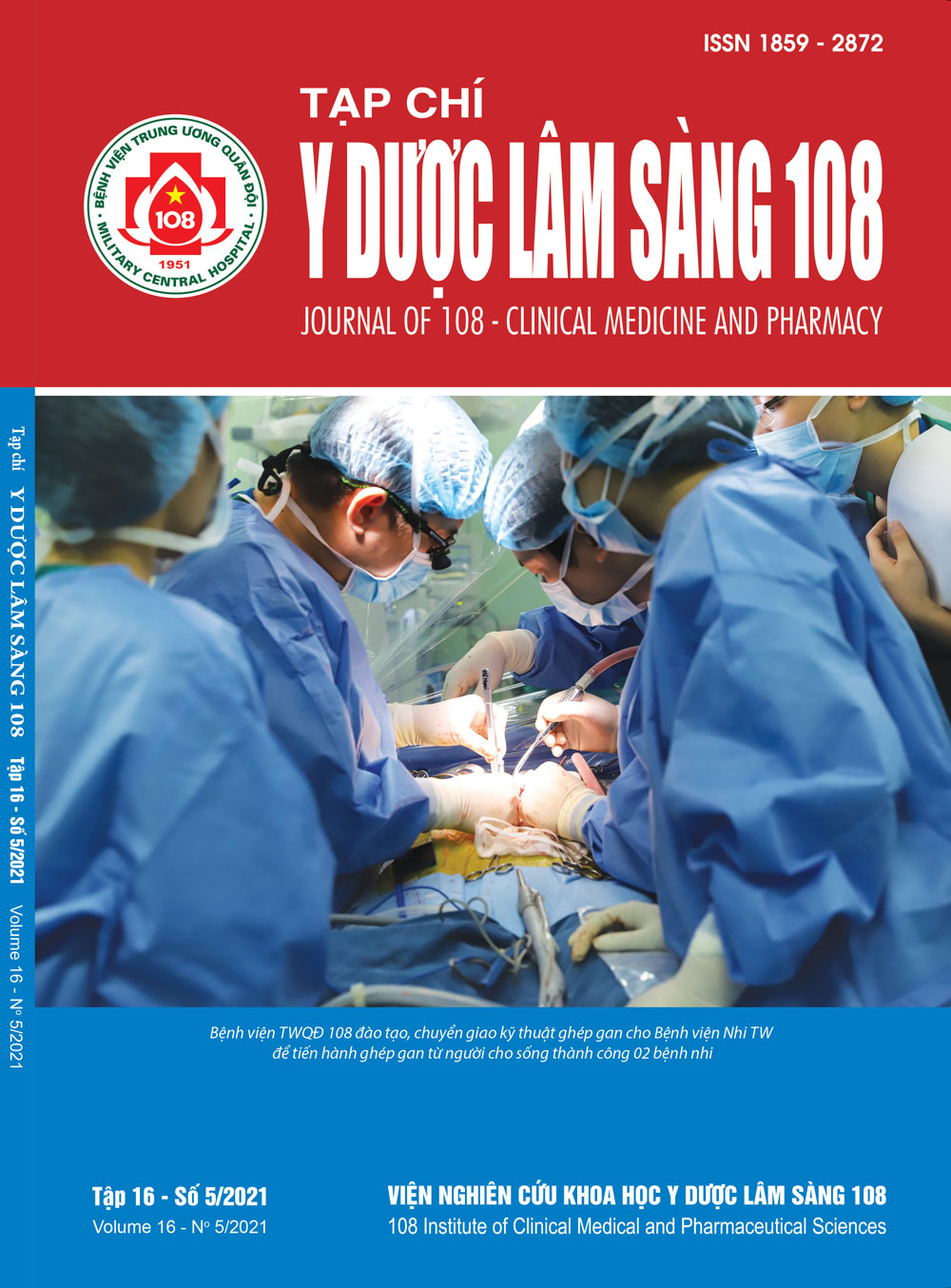Đặc điểm lâm sàng và hình ảnh nội soi chảy máu tiêu hoá do loét dạ dày tá tràng ở bệnh nhân có dùng thuốc chống huyết khối
Main Article Content
Keywords
Tóm tắt
Mục tiêu: Nghiên cứu đặc điểm lâm sàng và hình ảnh nội soi chảy máu tiêu hóa cao ở bệnh nhân dùng thuốc chống huyết khối. Đối tượng và phương pháp: Nghiên cứu mô tả cắt ngang trên 49 bệnh nhân chảy máu tiêu hóa có sử dụng thuốc chống huyết khối tại Bệnh viện Trung ương Quân đội 108. Kết quả: Tuổi trung bình của bệnh nhân là 68,98 ± 10,54 năm, đa số dùng thuốc chống kết tập tiểu cầu (65,3%). Triệu chứng lâm sàng phổ biến nhất là đại tiện phân đen (73,5%) và nôn máu (44,8%). Hình ảnh nội soi tiêu hoá gặp loét dạ dày tá tràng phân loại Forrest IIC và III chiếm tỷ lệ cao nhất (61,2%). Phần lớn số trường hợp chảy máu mức độ vừa và nặng (93,9%). Nguy cơ chảy máu tiêu hóa dạ dày ở bệnh nhân sử dụng thuốc kháng kết tập tiểu cầu là 4,03 với 95% CI: 1,16 - 10,00 (p<0,05). Kết luận: Chảy máu tiêu hoá do loét dạ dày tá tràng ở bệnh nhân có dùng chống huyết khối thường gặp ở người cao tuổi, đa số mức độ vừa và nhẹ, nội soi đã cầm chảy máu. Bệnh nhân sử dụng thuốc kháng kết tập tiểu cầu làm tăng nguy cơ chảy máu tiêu hóa do loét dạ dày lên 4,03 lần, so với các thuốc chống huyết khối không thuộc nhóm kháng tiểu cầu.
Article Details
Các tài liệu tham khảo
2. Allen PB, Tham TCK (2016) Approach to upper gastrointestinal bleeding. Gastrointestinal Emergencies, John Wiley & Son: 12-18.
3. BMJ (2002) Antithrombotic trialists collaboration collaborative meta-analysis of randomised trials of antiplatelet therapy for prevention of death, myocardial infarction, and stroke in high risk patients. BMJ 324(7329): 71-86.
4. Bytzer P, Connolly SJ, Yang S et al (2013) Analysis of upper gastrointestinal adverse events among patients given dabigatran in the RE-LY trial. Clin Gastroenterol Hepatol 11(3): 246-252.
5. Deutsch D, Romegoux P, Boustiere C et al (2019) Clinical and endoscopic features of severe acute gastrointestinal bleeding in elderly patients treated with direct oral anticoagulants: A multicentre study. Therap Adv Gastroenterol 12: 1756284819851677.
6. Hippisley-Cox J, Coupland C (2014) Predicting risk of upper gastrointestinal bleed and intracranial bleed with anticoagulants: Cohort study to derive and validate the QBleed scores. Bmj 349: 4606.
7. Forrest JAH, Finlayson NDC, Shearman DJC (1974) Endoscopy in gastrointestinal bleeding. The Lancet 304(7877): 394-397.
8. Tabibian N (1989) Acute gastrointestinal bleeding in anticoagulated patients: A prospective evaluation. Am J Gastroenterol 84: 10-12.
9. Thomopoulos KC, Mimidis KP, Theocharis GJ et al (2005) Acute upper gastrointestinal bleeding in patients on long-term oral anticoagulation therapy: Endoscopic findings, clinical management and outcome. World J Gastroenterol 11(9): 1365-1368.
10. ACG (2021) Clinical Guideline: Upper Gastrointestinal and Ulcer Bleeding. The American Journal of Gastroenterology 116(5): 899-917.
 ISSN: 1859 - 2872
ISSN: 1859 - 2872
